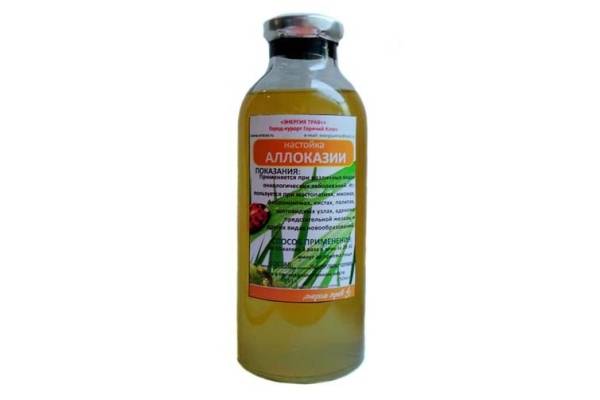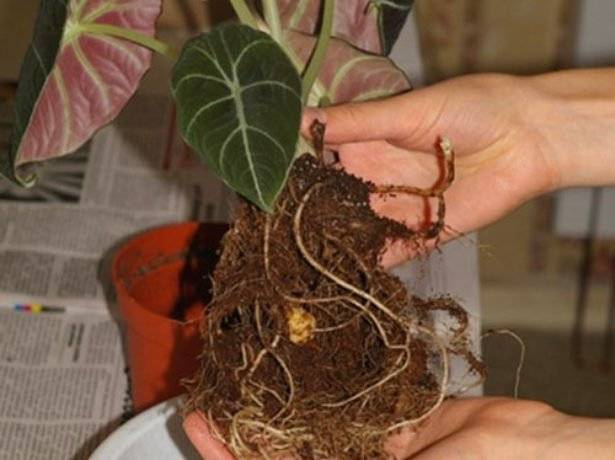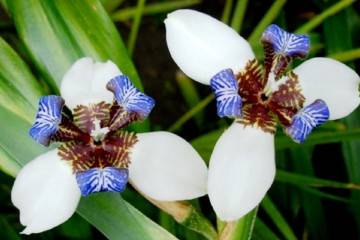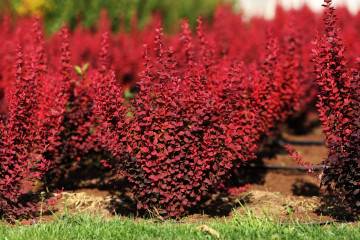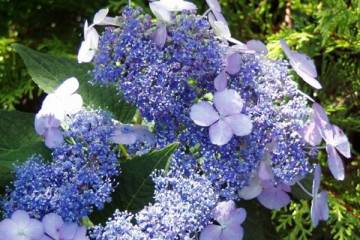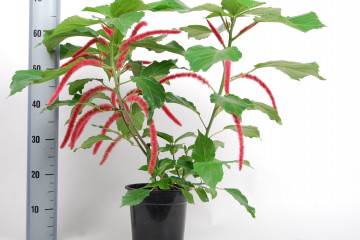Alokazia - home care, description of Polly and Amazonian varieties
Content:
Alocasia, for which home care is quite simple and does not require certain skills, is a beautiful flower with unusual leaves and flowering.
What does alocasia look like, which family does it belong to
Alocasia belongs to the Aroid family. The plant is cultivated only as an ornamental plant, since it can bloom only in greenhouse conditions. Description:
- The height, depending on the variety, ranges from 40 cm to 2 m.Taller specimens are also found, for example, a large-rooted species can reach a height of 2.5 m.
- The trunk can be clearly visible or virtually absent.
- The leaf plates are located on petioles, they are leathery, dense and tough to the touch. Their color is dark green. The shape is different for representatives of different varieties, it can be oval, pointed, heart-shaped, with or without veins.
Gardeners love alocasia for its excellent decorative characteristics, thanks to its large and beautiful leaf plates. The plant produces a bud very rarely and only in adulthood. The inflorescence exudes a strong and rather specific aroma, which often causes headaches in people.
Common varieties Polly and Amazon
The Amazonian variety has the following characteristics:
- stem up to 15 cm high;
- cuttings are small, pinkish in color, they hold leaf plates of an uneven, notched shape, divided into lobes, 50 cm long and 20 cm wide. They are painted in a rich shade of green.
When grown indoors, it almost never gives fruit and inflorescences. If this happens, the peduncle will be low, the length of the cob is not more than 10 cm, the color is green with a white tint.
Polly is a hybrid variety with a height of 50 to 70 cm. The width of its leaf plates does not exceed 20 cm. A distinctive feature of Polly is its frequent flowering in its natural growing environment.
Healing properties
Alocasia can treat various ailments. The therapeutic properties of the plant are due to its composition, which contains the following substances:
- coumarins;
- alkaloids;
- hydrocyanic acid;
- corrosive sublimate.
Properties useful for the human body:
- suppression of the growth and development of hematomas;
- providing an analgesic effect for pains of various etiologies and locations;
- expectorant effect;
- activation of the process of cell and tissue regeneration;
- wound healing effect;
- anti-inflammatory and anti-allergic effect.
Application of alocasia tincture
If alocasia house plant is grown on the windowsill, the treatment of many diseases can be carried out using a tincture prepared on its basis. Recipe:
- cut into small pieces the old leaf plate, which has already begun to turn yellow;
- pour 500 ml of vodka;
- insist 14 days in a dark place.
Application of alocasia tincture:
- Diseases of the thyroid gland.Soak gauze folded in a few words in a liquid, attach to the neck, cover with a film and a scarf on top. Keep the compress for 5 hours, the course of treatment is from 7 to 10 days.
- Paralysis, numbness. Alocasia tincture is rubbed into the affected area up to 3 times a day.
Features of caring for alocasia at home
Caring for Polly's alocasia at home is not difficult. The plant does not need to create specific conditions.
In spring and summer, the room temperature should be + 23-25 degrees. In winter, the plant will be comfortable at +20, but not lower than +18. Alocasia's lighting loves abundant and bright, but at the same time diffused. Do not allow a prolonged exposure to direct sunlight on the plant, because of which it can get sick and begin to fade.
Abundant watering must be provided to the plant during the growing season. But you need to make sure that the top layer of the earth dries out between waterings.
When caring for alocasia, it should be borne in mind that it needs a high percentage of air humidity - at least 60%. In this regard, the plant must be regularly sprayed with a spray bottle. In the summer heat, this should be done at intervals of 1-2 days; in winter, once every 7 days is enough. In the heat, it is recommended to pour damp pebbles into the tray under the pot.
For a plant, you can purchase ready-made soil or make it yourself. For this, leaf, peat and coniferous soil is mixed in equal parts, 1 part of sand and a handful of charcoal are added to this mixture.
During the growing season, fertilizer is applied every 2 weeks. It is recommended to alternate organic matter, complex mineral fertilizers and products intended for deciduous ornamental plants.
Features of care in winter, during the rest period of alocasia
In winter, the temperature drops, watering decreases. Fertilizer can be omitted. If there are additional feeding, then no more than 1 time per month and in a minimum amount. The dormant period lasts from mid-October to early spring.
Alocasia does not need pruning. As the leaf plates wilt, they are removed after complete drying.
How alocasia multiplies
You should know, growing a plant such as alocasia, its reproduction is carried out by cuttings or seeds.
Germinating seeds
The seed method can only be used on monochromatic plant varieties. Variegated representatives of the species during seed propagation do not convey the characteristics of the parent variety. How alocasia is propagated by seeds:
- A nutrient mixture is prepared. For this, peat and sand are mixed in equal proportions.
- The seeds are laid out on the surface of the ground, you do not need to deepen them much, just press them a little with your finger.
- The soil is sprayed with water, the container with the seed is covered with glass or foil. You need to keep the seeds at a temperature of about +24 degrees.
- Every day, the box with seeds must be opened for 20-30 minutes to ventilate the soil, otherwise mold and mildew will appear on it.
- As the soil dries up, moderate watering is needed.
When the seedlings that appear will grow a little and get stronger, they can be transplanted into separate pots.
Rooting cuttings
At home, it is preferable to propagate alocasia by cuttings. For this, the upper part of the shoot is cut off. The cut is made at an angle of 45 degrees.The stalk is processed with a growth stimulant. Planting material is placed in a nutritious, moist soil.
Alocasia transplant
For transplanting a plant, it is recommended to choose containers made of terracotta or plastic. The diameter of the pot should be 3 cm larger than the previous size.
When the alocasia is removed from the old container, the roots must be cleaned of soil, rinsed and left to dry for 10-15 minutes. Expanded clay or fine gravel must be poured into a new pot on the bottom as drainage.
Do not crush the soil after transplanting, it must remain loose in order to provide breathing for the roots. Within 2 weeks after transplanting, drip irrigation is organized or water is poured into a tray under the pot. Water the transplanted plant after the soil is 1/3 dry.
Possible problems in growing alocasia
In alocasia, diseases are rare, but nevertheless, some difficulties may have to be faced.
Leaves turn yellow
This symptom can occur due to the following reasons:
- lack of nutrients in the soil;
- lack of moisture;
- sunburn.
Treatment consists in removing damaged leaf plates and in creating favorable conditions for the plant.
The tips of the leaves dry
Lack of watering, low humidity.
The lower leaves fall
Stagnant water, improperly selected soil.
Pests
Large alocasia rarely suffers from insect attacks, but the appearance of aphids or spider mites on it is not excluded. The reason for the appearance of pests is improper care, low humidity, too high temperatures. Treatment - processing of sheet plates with soapy water. If there are too many insects, Actellik is used at a dosage of 2 ml per 1 liter of water.
Alocasia is a very beautiful plant with excellent decorative characteristics. Since it is easy enough to look after her, she is often turned on in offices. Despite the fact that the appearance of a bud in "captivity" is almost impossible, the plant is loved for the splendor and splendor of its leaf plates.


